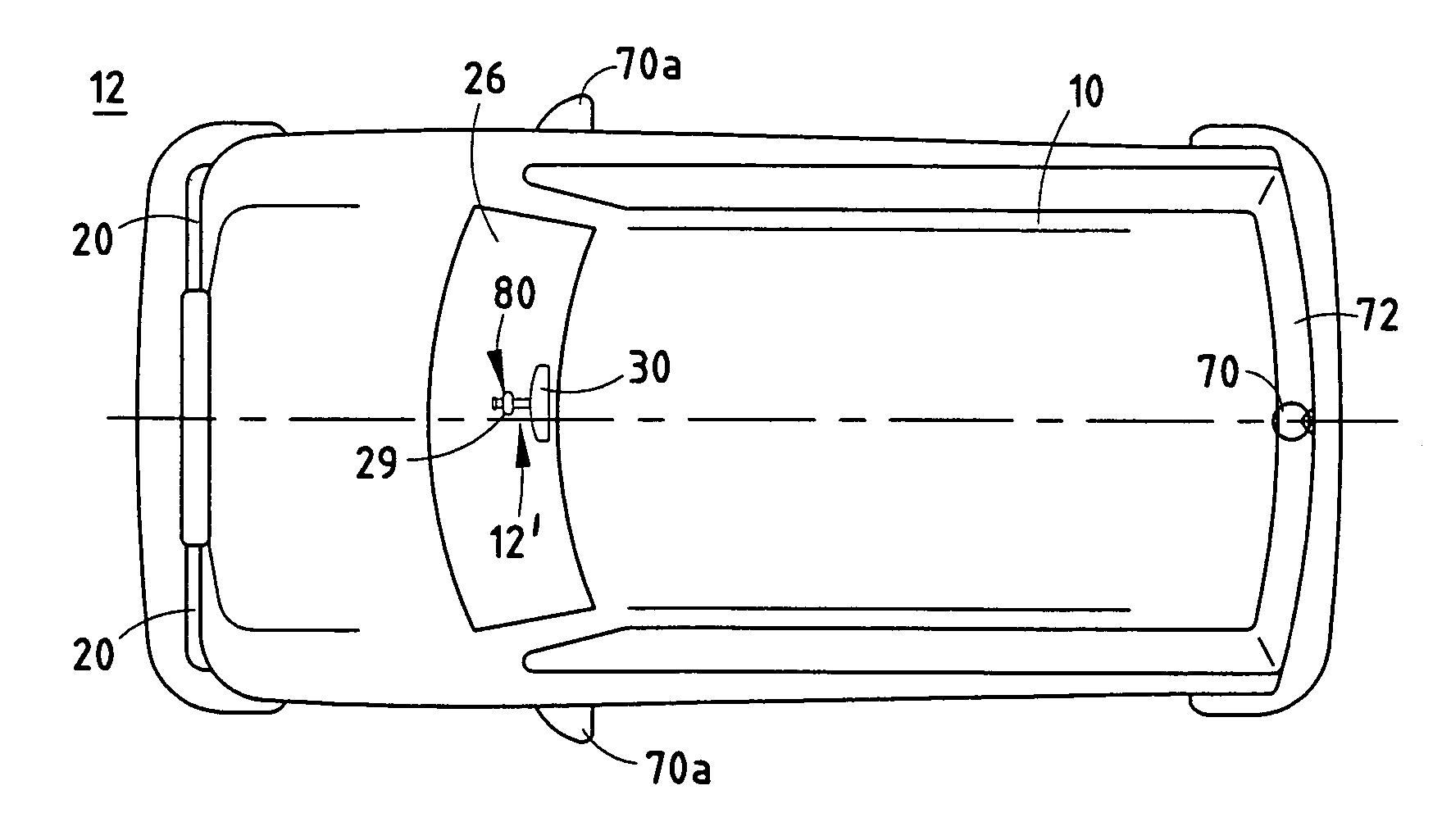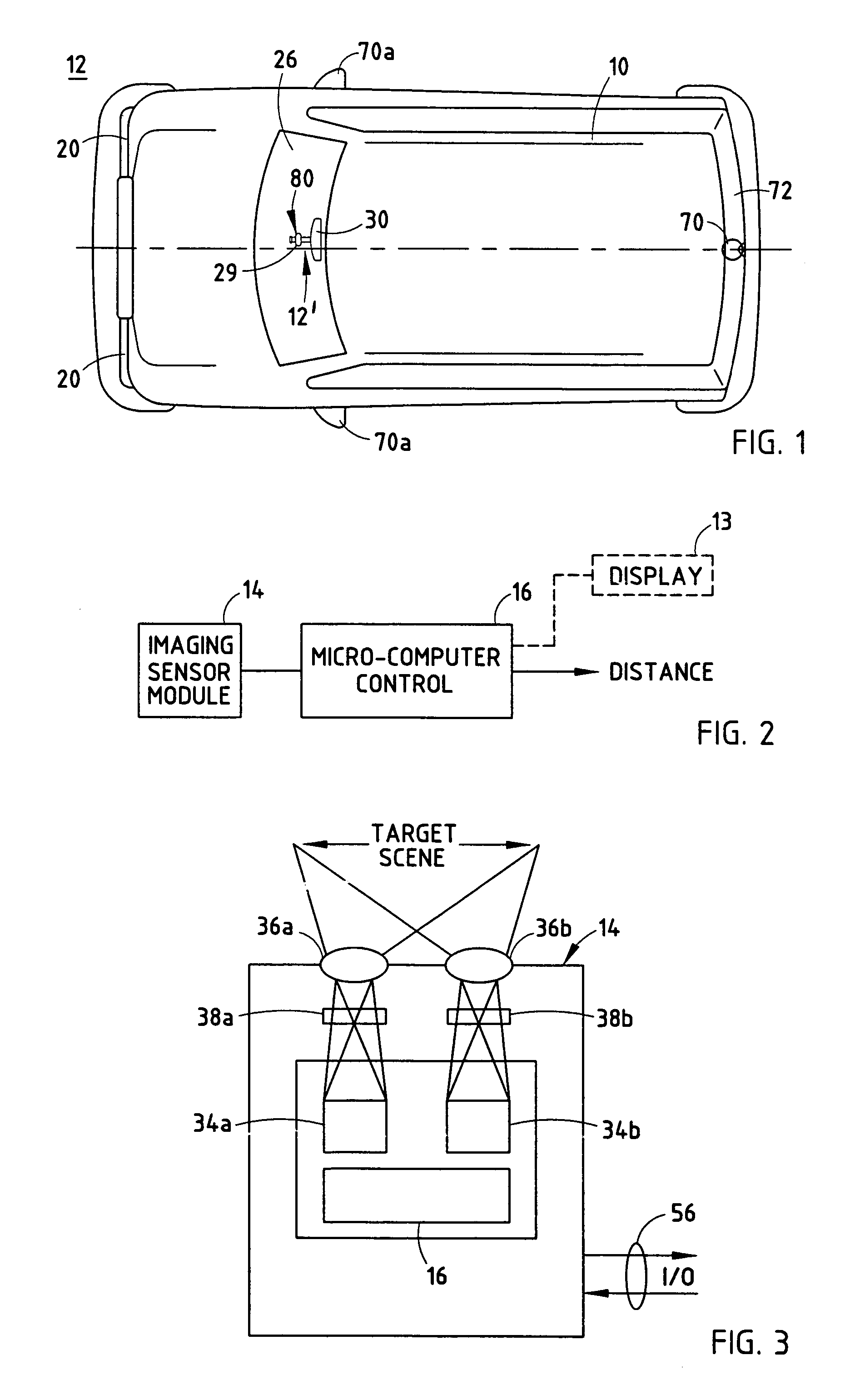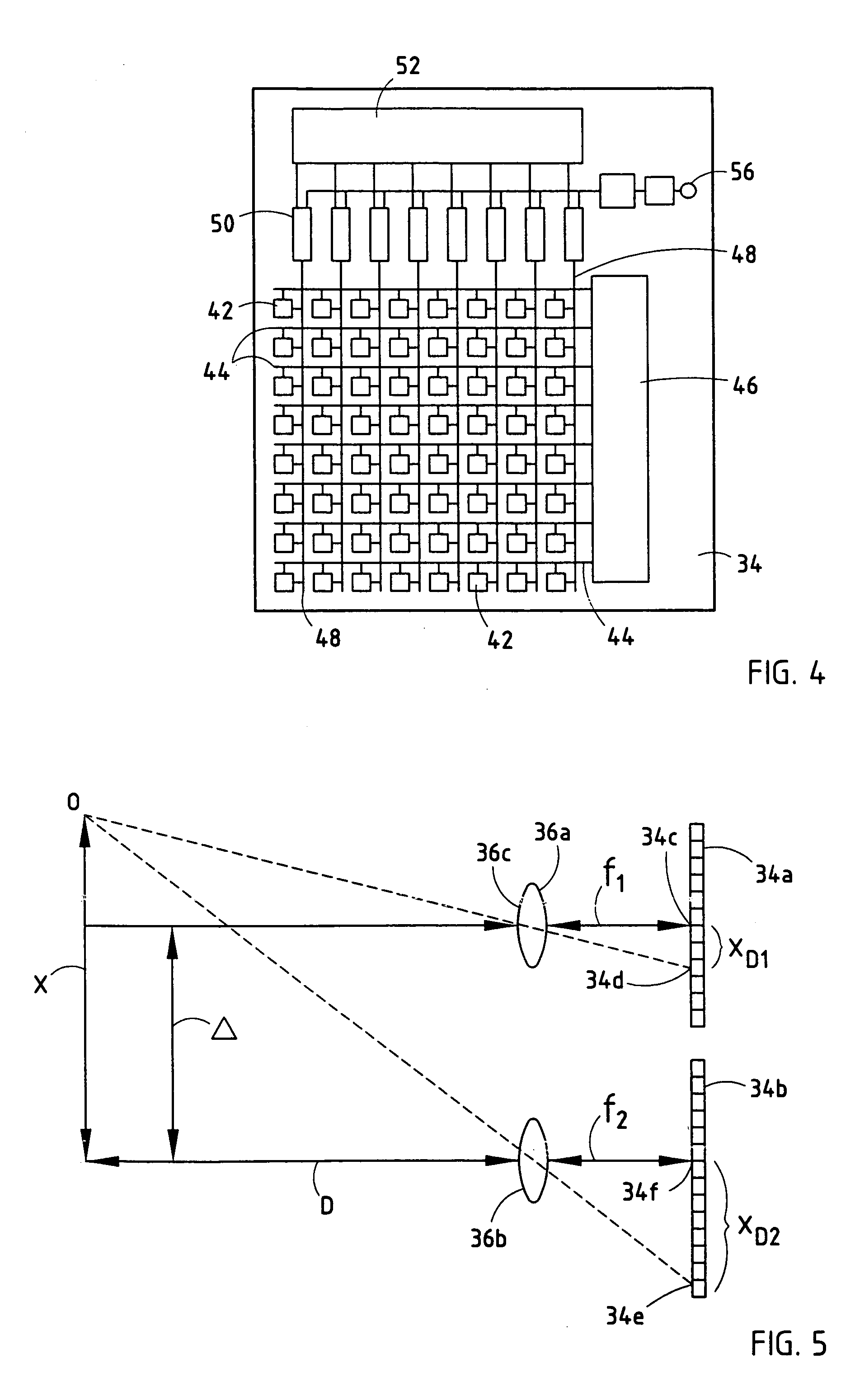Vehicle imaging system
a vehicle vision and control system technology, applied in the field of vehicle vision systems, can solve the problems of system bulk and cost, system deficiency in determining the distance between the sensed light source, and difficulty in reliably detecting taillights, so as to avoid excessive additional costs and bulk to the vehicle vision and/or control system, accurate determining the distance from the subject vehicl
- Summary
- Abstract
- Description
- Claims
- Application Information
AI Technical Summary
Benefits of technology
Problems solved by technology
Method used
Image
Examples
Embodiment Construction
[0032]Referring now specifically to the drawings and the illustrative embodiments depicted therein, a vehicle 10 includes a vehicle imaging system 12 which includes an imaging sensor module 14 and an imaging control 16, as shown in FIGS. 1, 2 and 3. Vehicle imaging system 12 may be a rearview vision system of the type disclosed in commonly assigned U.S. Pat. No. 5,670,935, a rearview vision system of the type disclosed in commonly assigned published PCT Application, International Publication No. WO96 / 38319, published Dec. 5, 1996, a wide angle image capture system of the type disclosed in commonly assigned co-pending U.S. patent application Ser. No. 09 / 199,907, filed Nov. 25, 1998 by Brent J. Bos, et al., now U.S. Pat. No. 6,717,610, a rain sensor and the like of the type disclosed in commonly assigned published PCT application, International Publication No. WO 99 / 23828, published May 14, 1999, or a headlamp dimming control of the type disclosed in U.S. Pat. No. 5,796,094, issued to...
PUM
 Login to View More
Login to View More Abstract
Description
Claims
Application Information
 Login to View More
Login to View More - R&D
- Intellectual Property
- Life Sciences
- Materials
- Tech Scout
- Unparalleled Data Quality
- Higher Quality Content
- 60% Fewer Hallucinations
Browse by: Latest US Patents, China's latest patents, Technical Efficacy Thesaurus, Application Domain, Technology Topic, Popular Technical Reports.
© 2025 PatSnap. All rights reserved.Legal|Privacy policy|Modern Slavery Act Transparency Statement|Sitemap|About US| Contact US: help@patsnap.com



